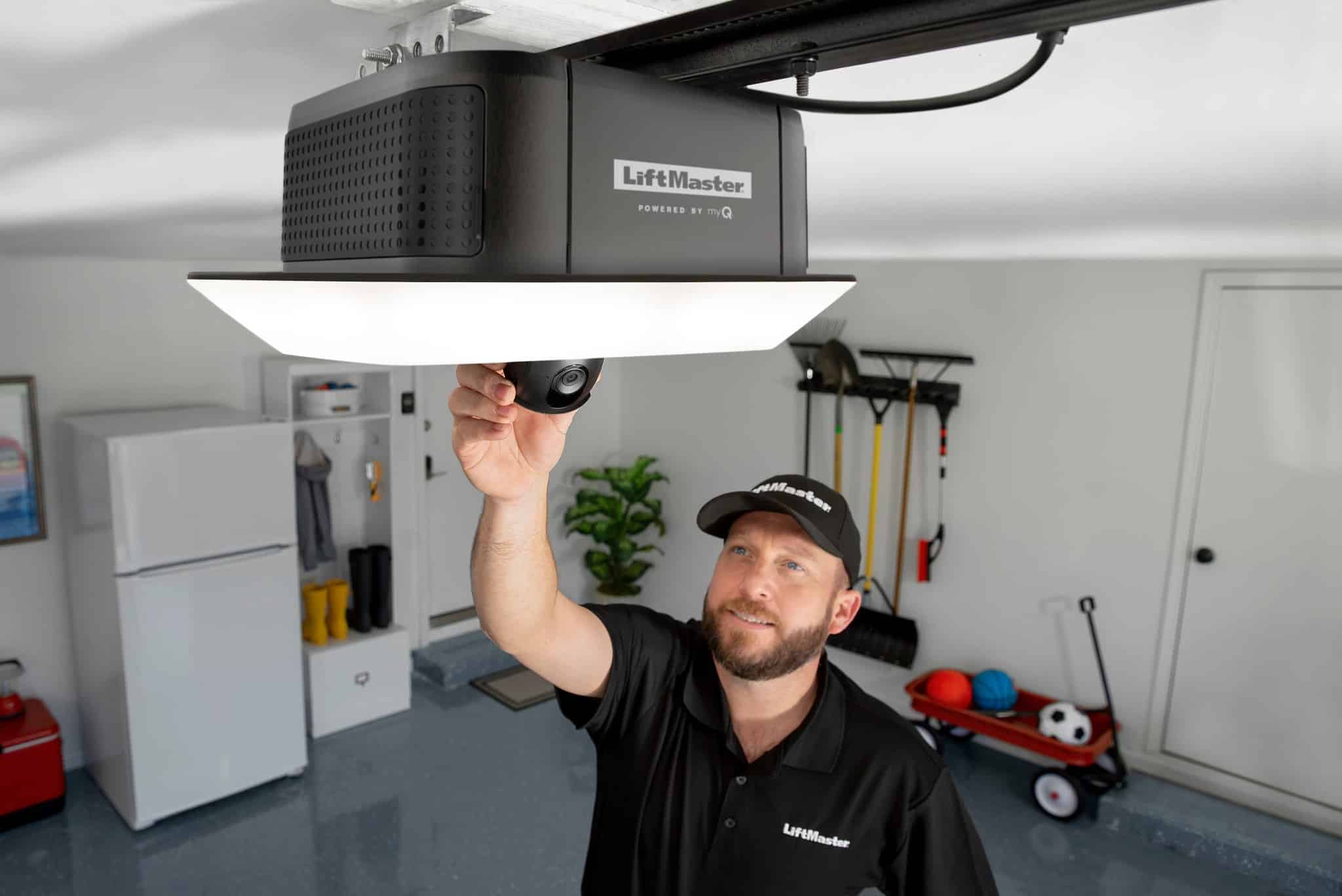
How Do You Lock The Garage Door Manually?
Locking your garage door manually is an essential skill for any homeowner. While modern garage doors are equipped with automatic openers and advanced security features, there are times when knowing how to lock a garage door manually becomes crucial. Whether you’re dealing with a power outage, an automatic opener malfunction, or want to add an extra layer of security, understanding this process ensures your home remains protected. Additionally, manual locking can provide peace of mind when you’re away on vacation or during severe weather events that might disrupt power. This guide will provide detailed instructions and tips on manually securing your garage door, helping you maintain the safety and security of your property in various situations.
When do you need to Lock The Garage Door Manually?
- Power Outages: An automatic garage door opener won’t function during a power outage, requiring manual intervention.
- Opener Malfunction: Mechanical or electrical issues with the opener may necessitate manual locking.
- Security Concerns: In some cases, manual locking can provide an extra layer of security against break-ins.
Tools and Materials Needed
- Garage door manual lock (if not already installed)
- Padlock (if applicable)
- Wrench or screwdriver (depending on the type of lock)
- Lubricant (optional for more effortless operation)
Types of Manual Locks
- Slide Bolt Lock: This lock is common in older garage doors. It involves a metal bar that slides into a slot to secure the door.
- T-Handle Lock: This is a more modern option. It is mounted on the door’s exterior and requires a key to operate.
- Inside Deadbolt: Similar to a home deadbolt, this lock is installed inside the garage door and requires manual operation.
Step-by-Step Guide to Locking Your Garage Door Manually
1. Disconnect the Automatic Opener
Before you can lock the garage door manually, you need to disconnect it from the automatic opener:
- Locate the Emergency Release Cord: This is usually a red cord hanging from the opener rail.
- Pull the Cord: Pulling the emergency release cord disengages the door from the opener, allowing you to operate it manually.
2. Close the Garage Door
Ensure the garage door is fully closed before locking it:
- Manually Lower the Door: If the door still needs to be closed, carefully lower it by hand.
3. Engage the Manual Lock
Depending on the type of lock installed, follow the appropriate steps:
Slide Bolt Lock
- Locate the Lock: Find the slide bolt lock inside the garage door.
- Slide the Bolt: Push the metal bar into the slot to secure the door. If the lock has holes for a padlock, insert and secure the padlock.
T-Handle Lock
- Insert the Key: Place the key into the lock on the garage door’s exterior.
- Turn the Key: Rotate the key to engage the locking mechanism.
- Check the Handle: Ensure the handle is locked and cannot be turned without the key.
Inside Deadbolt
- Locate the Deadbolt: Find the deadbolt mechanism inside the door.
- Turn the Bolt: Rotate the bolt into the locked position.
Additional Security Tips
Ensuring the security of your garage goes beyond just locking it manually. Here are several additional measures you can take to enhance the safety of your garage and home:
-
Install Additional Locks:
- Consider installing multiple locks on your garage door. Adding a second slide bolt lock or an additional deadbolt can provide extra security.
- Ensure these locks are strategically placed, such as at the bottom and top, to make it harder for intruders to force the door open.
-
Regular Maintenance:
- Regularly inspect and maintain your locks to ensure they function smoothly. Lubricate locks with appropriate lubricants to prevent rust and stiffness.
- Check for any signs of wear and tear and replace old or damaged locks promptly.
-
Secure the Emergency Release
- Add a zip tie or cover to the emergency release cord to prevent intruders from tampering. Be sure it’s still accessible in case of emergencies.
- Use a garage shield kit, which covers the emergency release handle, making it more difficult for intruders to access.
-
Install Motion Sensor Lights:
- Install motion sensor lights around your garage. These lights will turn on when motion is detected, deterring potential intruders and providing better visibility at night.
-
Use a Security System:
- Integrate your garage into your home security system. Install sensors on the garage door that alert you when the door is opened.
- Consider using security cameras with real-time monitoring capabilities to monitor your garage and its surroundings.
-
Frost or Cover Windows:
- If your garage door has windows, consider frosting them or using curtains to obscure the view. This prevents potential intruders from seeing valuables or tools they might want to steal.
- Reinforce windows with security film or bars for added protection.
-
Keep the Garage Remote Secure:
- Avoid leaving the garage door remote in your car, especially if parked outside. Instead, take it with you or use a keychain remote that stays with you.
- Use modern & Smart garage door openers with rolling code technology to prevent code grabbing.
-
Reinforce the Door Leading to Your Home:
- Ensure the door from your garage into your home is as secure as your front door. Use a solid-core door with a deadbolt lock.
- Consider installing a peephole or a smart doorbell to monitor this entry point.
-
Educate Family Members:
- Ensure everyone in your household understands how to properly secure the garage door manually and knows the importance.
- Teach them to use all installed security features and the correct procedures during emergencies.
-
Garage Door Timer:
- Install a garage door timer that automatically closes the door after a set period. This feature helps in situations where the door might be accidentally left open.
Implementing these additional security measures can significantly enhance the safety of your garage and home. Combining these tips with knowing how to lock your garage door manually ensures you are well-prepared to protect your property against various threats.
Frequently Asked Questions (FAQs)
Q: How do I know if my garage door has a manual lock installed?
A: Inspect the inside for a slide bolt or deadbolt mechanism to determine if your garage door has a manual lock. Check the outside surface for a handle with a keyhole for exterior T-handle locks. If unsure, consult your garage door’s manual or contact a professional.
Q: Can I install a manual lock on my garage door if it doesn’t have one?
A: You can install a manual lock on your garage door. Slide bolt locks and inside deadbolts can be installed on most garage doors. T-handle locks require drilling holes through the door, so ensure you have the necessary tools and skills or hire a professional to install the lock.
Q: Is it safe to use a manual lock if I have an automatic garage door opener?
A: Yes, using a manual lock with an automatic garage door opener is safe. However, always ensure the door is fully closed, and the automatic opener is disengaged before engaging the manual lock. Using the automatic opener while the door is manually locked can damage the door or opener.
Q: How can I prevent someone from using the emergency release to open my garage door?
A: To secure the emergency release, you can use a zip tie or a specially designed garage door shield that covers the release mechanism. These solutions prevent intruders from pulling the release cord through a gap in the door. Remember to remove or adjust these security measures in case of an emergency where you need to manually operate the door.
Q: What should I do if my manual lock becomes difficult to operate?
A: If your manual lock is difficult to operate, try lubricating the mechanism with a garage door lubricant or silicone spray. Avoid using oil-based lubricants, as they can attract dirt and grime. If the lock remains challenging to use, inspect it for damage or wear and consider replacing it if necessary.
Conclusion
In today’s world, where technology often takes center stage, it is easy to overlook the importance of basic skills like manually locking your garage door. However, this knowledge is invaluable, especially during unforeseen circumstances such as power outages or mechanical failures. By understanding the different types of manual locks and following the step-by-step instructions in this guide, you can ensure that your garage remains secure even when modern conveniences are unavailable. Additionally, implementing additional security tips can further enhance the safety of your home. Whether you are preparing for a storm, leaving for a trip, or simply looking to increase your home’s security, mastering the process of how to lock a garage door manually is a practical and essential step in safeguarding your property.



